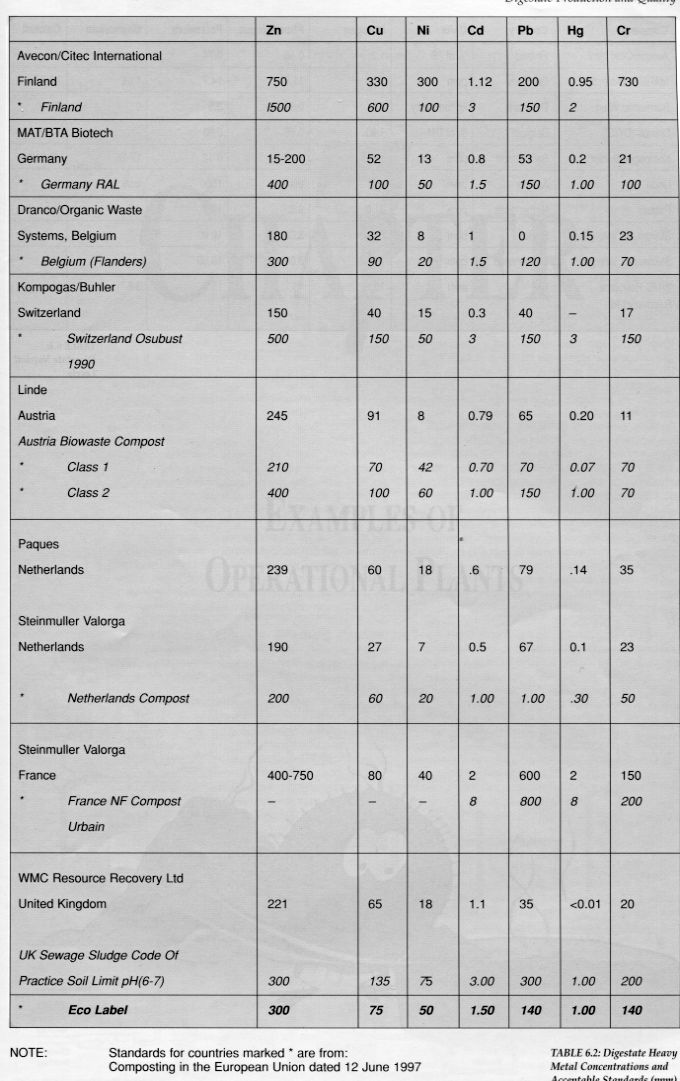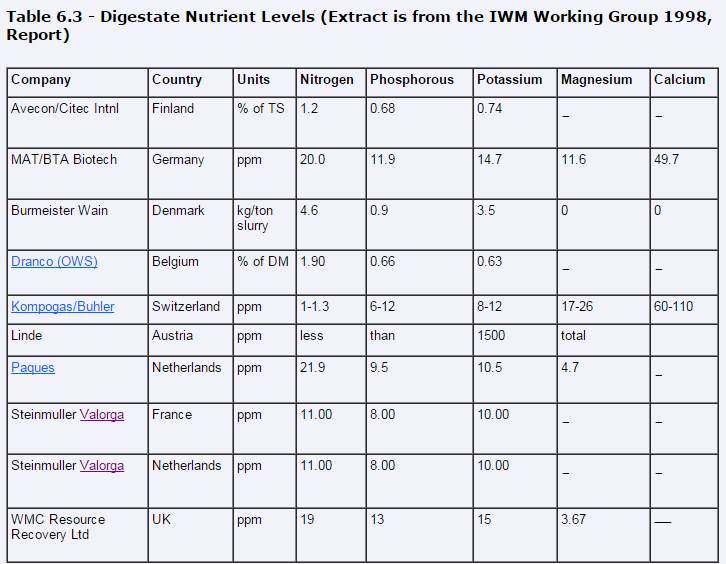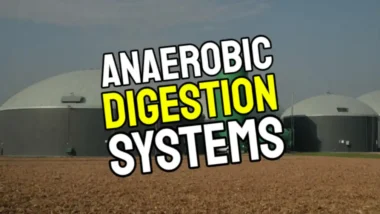Composition, Contaminants, and Applications of Digestate
Anaerobic digestion has emerged as a pivotal process in waste management and renewable energy production. One of its primary by-products, digestate, serves as a valuable fertilizer and soil conditioner.
Understanding the composition, potential contaminants, and beneficial uses of digestate is essential for maximizing its advantages while mitigating any risks associated with its application.
This comprehensive guide delves into the intricate details of digestate quality, examining nutrient levels, heavy metals, and their impact on soil health and agricultural productivity.

Introduction to Digestate
Digestate is the residual material left after the anaerobic digestion of organic matter, such as agricultural waste, food scraps, and sewage sludge. This process not only generates biogas—a renewable energy source—but also produces digestate, which can be repurposed as a sustainable fertilizer.
The utilization of digestate contributes to circular economy principles by recycling nutrients back into the soil, reducing the reliance on synthetic fertilizers, and minimizing environmental pollution.
Composition of Digestate
The quality and efficacy of digestate as a fertilizer are determined by its composition, which varies based on the feedstock used and the anaerobic digestion process parameters. Key components of digestate include:
Nutrient Content
- Nitrogen (N): Essential for plant growth, nitrogen in digestate is available in both organic and inorganic forms. It plays a crucial role in chlorophyll formation and protein synthesis.
- Phosphorus (P): Vital for energy transfer and root development, phosphorus enhances overall plant vigor and fruit quality.
- Potassium (K): Known as the “quality nutrient,” potassium regulates various physiological processes, including water uptake and enzyme activation.
Organic Matter
Digestate contains a significant amount of organic matter, which improves soil structure, water retention, and microbial activity. This organic content also aids in the slow release of nutrients, providing sustained nourishment to plants.
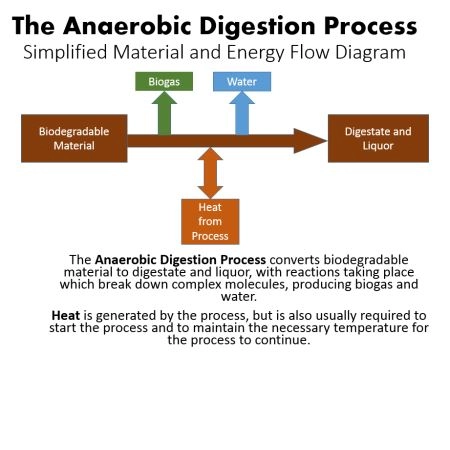
Trace Elements
Essential micronutrients such as calcium, magnesium, sulfur, and micronutrients like zinc and copper are present in digestate, supporting various aspects of plant metabolism and overall health.
pH Levels
The pH of digestate typically ranges from neutral to slightly alkaline, which can influence soil pH and nutrient availability when applied as a fertilizer.
Digestate Nutrient Composition
Table of Typical Nutrient Composition of Digestate

“Chemical composition of digestate …” from www.researchgate.net and used with no modifications.
Contaminants in Digestate
While digestate offers numerous benefits, it is imperative to assess and manage potential contaminants to ensure its safe and effective use in agriculture.
Heavy Metals
Heavy metals such as lead (Pb), cadmium (Cd), mercury (Hg), and arsenic (As) can accumulate in digestate, primarily depending on the feedstock's origin. High concentrations of these metals pose risks to soil health, plant uptake, and, subsequently, to the food chain.
Sources of Heavy Metals
- Industrial Waste: If industrial by-products are part of the feedstock, they can introduce significant levels of heavy metals.
- Urban Waste: Sewage sludge may contain trace amounts of heavy metals from household products and runoff.
- Agricultural Inputs: Pesticides and fertilizers used in agriculture can contribute to heavy metal content in digestate.
Pathogenic Microorganisms
Digestate can harbor pathogenic bacteria, viruses, and parasites, especially if the anaerobic digestion process does not achieve sufficient temperatures to eliminate these organisms. Proper treatment and handling are essential to mitigate health risks.
Organic Pollutants
Persistent organic pollutants (POPs), including pesticides, pharmaceuticals, and personal care products, may persist in digestate. Their presence depends on the input waste stream and the effectiveness of the digestion process in degrading these compounds.
Residual Solids and Plastics
Inadequately treated feedstock may result in residual solids, including plastics and other non-degradable materials, within the digestate. These contaminants can adversely affect soil structure and plant health.
Beneficial Uses of Digestate (with Biochar)
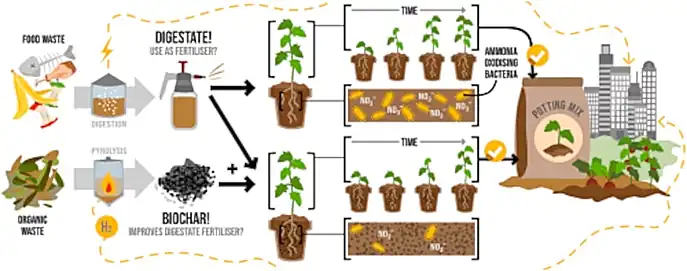
“Closing the circle for urban food waste …” from www.sciencedirect.com and used with no modifications.
When free from harmful contaminants, digestate serves as an excellent fertilizer and soil conditioner, offering numerous advantages over conventional fertilizers.
Soil Amendment
Digestate enhances soil structure by increasing organic matter content, which improves aeration, water retention, and microbial activity. These improvements lead to healthier and more resilient soil ecosystems.
Nutrient Supply
Providing a balanced supply of essential nutrients, digestate supports robust plant growth and development. Its slow-release nature ensures that nutrients are available to plants over extended periods, reducing the need for frequent fertilization.
Carbon Sequestration
Incorporating digestate into the soil contributes to carbon sequestration, helping mitigate climate change by capturing and storing atmospheric carbon dioxide.
Environmental Benefits
Using digestate reduces the reliance on synthetic fertilizers, which are energy-intensive to produce and can lead to environmental issues such as eutrophication and greenhouse gas emissions.
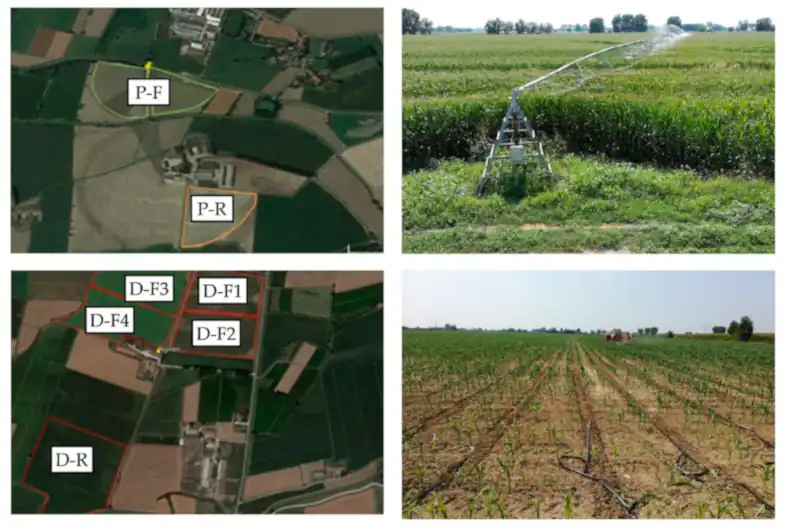
“Digestate Using Drip Irrigation …” from www.mdpi.com and used with no modifications.Image: Agricultural fields benefiting from digestate application.
Impact of Nutrient Levels on Digestate Value
The efficacy of digestate as a fertilizer is heavily influenced by its nutrient concentrations. Proper nutrient management ensures that plants receive balanced nutrition, promoting healthy growth and maximizing yields.
Nitrogen Availability
Adequate nitrogen levels are critical for vegetative growth. However, excessive nitrogen can lead to nutrient leaching, groundwater contamination, and air pollution through nitrogen oxide emissions.
Phosphorus Balance
Phosphorus is essential for energy transfer within plants, but over-application can cause soil phosphorus saturation, reducing its availability and potentially leading to runoff and waterway eutrophication.
Potassium Optimization
Sufficient potassium levels enhance plant resilience to stressors such as drought and pests. Balancing potassium application prevents deficiencies that can compromise crop quality and yield.
Nutrient Ratios
Maintaining optimal nutrient ratios (N:P:K) is vital for tailoring digestate to specific crop requirements. Soil testing and analysis guide precise application rates, ensuring that nutrient supply aligns with plant needs.
Impact of Heavy Metals on Soil and Plant Health
The presence of heavy metals in digestate poses significant challenges for its safe application in agriculture. Understanding their effects and implementing management strategies is crucial for sustainable use.
Soil Contamination
Heavy metals can accumulate in the soil over time, disrupting soil microbial communities and adversely affecting soil structure and fertility. High metal concentrations can inhibit plant growth and reduce crop yields.
Plant Uptake and Food Safety
Plants can uptake heavy metals from the soil, leading to their accumulation in edible plant parts. This not only affects plant health but also poses serious food safety concerns for consumers.
Health Risks
Exposure to heavy metals through the food chain can lead to various health issues in humans and animals, including neurological disorders, kidney damage, and increased cancer risk.
Mitigation Strategies
- Feedstock Selection: Carefully sourcing and selecting feedstocks with low heavy metal concentrations reduces the risk of contaminant accumulation in digestate.
- Pre-treatment Processes: Implementing pre-treatment steps to remove or reduce heavy metals before anaerobic digestion enhances digestate quality.
- Regular Monitoring: Conducting frequent analyses of digestate and soil for heavy metal levels ensures compliance with safety standards and facilitates timely interventions.
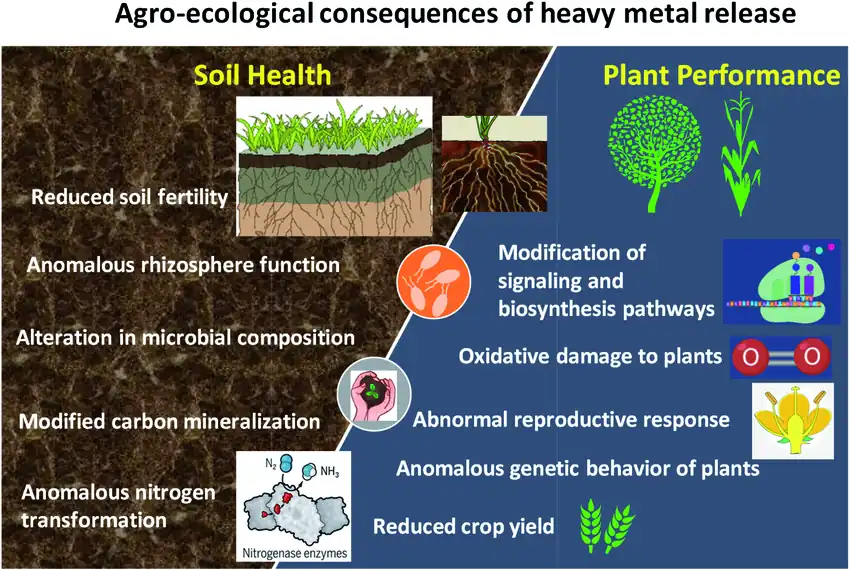
“heavy metals on soil and plant health …” from www.researchgate.net and used with no modifications.
Infographic: Effects of heavy metals on soil and plant health.
Regulatory Standards and Compliance
Ensuring that digestate meets regulatory standards is paramount for its safe use in agriculture. Various countries have established guidelines to control contaminant levels and promote sustainable practices.
European Union (EU) Standards
Under the EU's Fertilizing Products Regulation (Regulation (EU) 2019/1009), digestate must comply with specific limits for heavy metals and pathogen content to be marketed as a fertilizer.
United States Environmental Protection Agency (EPA)
The EPA regulates digestate through the Resource Conservation and Recovery Act (RCRA), setting standards for land-applied biosolids to prevent environmental contamination.
Local and National Guidelines
Different regions may have additional or more stringent requirements. Producers must stay informed about and adhere to all applicable regulations to ensure compliance and promote safe usage.
Best Practices for Managing Digestate Quality
To maximize the benefits of digestate while minimizing risks, adopting best management practices is essential. These practices encompass feedstock selection, processing techniques, application methods, and ongoing monitoring.
Feedstock Management
- Diverse Feedstocks: Using a mix of organic materials can balance nutrient content and reduce the concentration of specific contaminants.
- Quality Assessment: Regularly testing feedstocks for contaminants ensures that only suitable materials enter the anaerobic digestion process.
Processing Techniques
- Advanced Digestion Methods: Utilizing high-temperature or extended digestion periods can enhance pathogen reduction and degrade organic pollutants.
- Separation Technologies: Implementing solid-liquid separation can concentrate nutrients and remove residual solids, improving digestate quality.
Application Practices
- Soil Testing: Conducting thorough soil analyses before digestate application helps tailor nutrient inputs to specific soil needs, preventing over-fertilization.
- Application Timing and Rate: Applying digestate during optimal growth periods and at appropriate rates enhances nutrient uptake and minimizes environmental impact.
Monitoring and Record-Keeping
- Regular Testing: Continuously monitoring digestate composition ensures consistent quality and compliance with regulatory standards.
- Documentation: Maintaining detailed records of feedstock sources, processing parameters, and application rates facilitates transparency and traceability.
Maximizing the Value of Digestate
Leveraging the full potential of digestate involves integrating it into broader agricultural and environmental management strategies. This integration fosters sustainable farming practices and contributes to environmental stewardship.
Integrated Nutrient Management
Combining digestate application with other nutrient sources, such as cover crops and compost, creates a holistic approach to soil fertility, enhancing resilience and productivity.
Carbon Footprint Reduction
Utilizing digestate reduces greenhouse gas emissions associated with synthetic fertilizer production and waste decomposition, supporting climate change mitigation efforts.
Economic Benefits
Producing and using digestate can lower fertilizer costs for farmers, create additional revenue streams for waste management facilities, and stimulate local economies through sustainable practices.
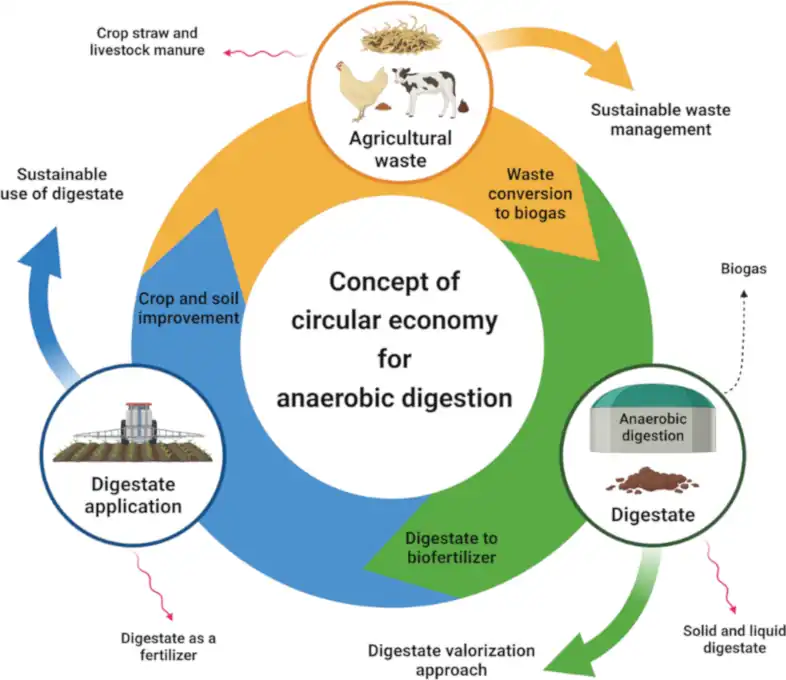
“Anaerobic digestion of agricultural …” from link.springer.com and used with no modifications.
Image: Sustainable farming practices incorporating digestate.
Conclusion
Digestate from anaerobic digestion offers a sustainable and nutrient-rich alternative to conventional fertilizers, promoting soil health and agricultural productivity.
However, its quality hinges on careful management of nutrient levels and contaminants, particularly heavy metals.
By adhering to regulatory standards, implementing best practices, and conducting regular monitoring, stakeholders can harness the full benefits of digestate while safeguarding environmental and public health.
Embracing digestate as part of a comprehensive waste management and agricultural strategy not only advances sustainability goals but also fosters resilient and productive farming systems.
Ready to Enhance Your Soil with High-Quality Digestate?
Contact us today to learn more about our digestate products and how they can benefit your agricultural practices. Get in Touch
Download Our Comprehensive Guide on Digestate Management
Equip yourself with the knowledge to maximize digestate benefits while minimizing risks. Download Now
Schedule a Free Digestate Quality Assessment
Ensure your digestate meets all necessary standards for optimal use. Schedule Now
For further information, explore our resources or consult with our experts.
The acceptable levels for rates of fertiliser application, and the level of tolerance of heavy metals, still does vary for each country. Application rates are however, universally regulated and monitored to avoid the build up of heavy metals in the soil to toxic levels.
Although, until 2011 the author's view is that in the UK only about 50% of digestate produced in the UK was earning any revenue for the AD Plant operator, the position is now changing with the introduction of “end-of-waste” protocols by the Environment Agency (England and Wales), and the adoption of the PAS110 quality standard which applies to only the cleanest waste in the from of source segregated organic waste.
Table 6.2: – Digestate Heavy Metal Concentrations and Local Permissible Maximum Concentrations (Extract is from the IWM Working Group 1998, Report)
[Originally published in November 2014. Updated version April 2025.]



